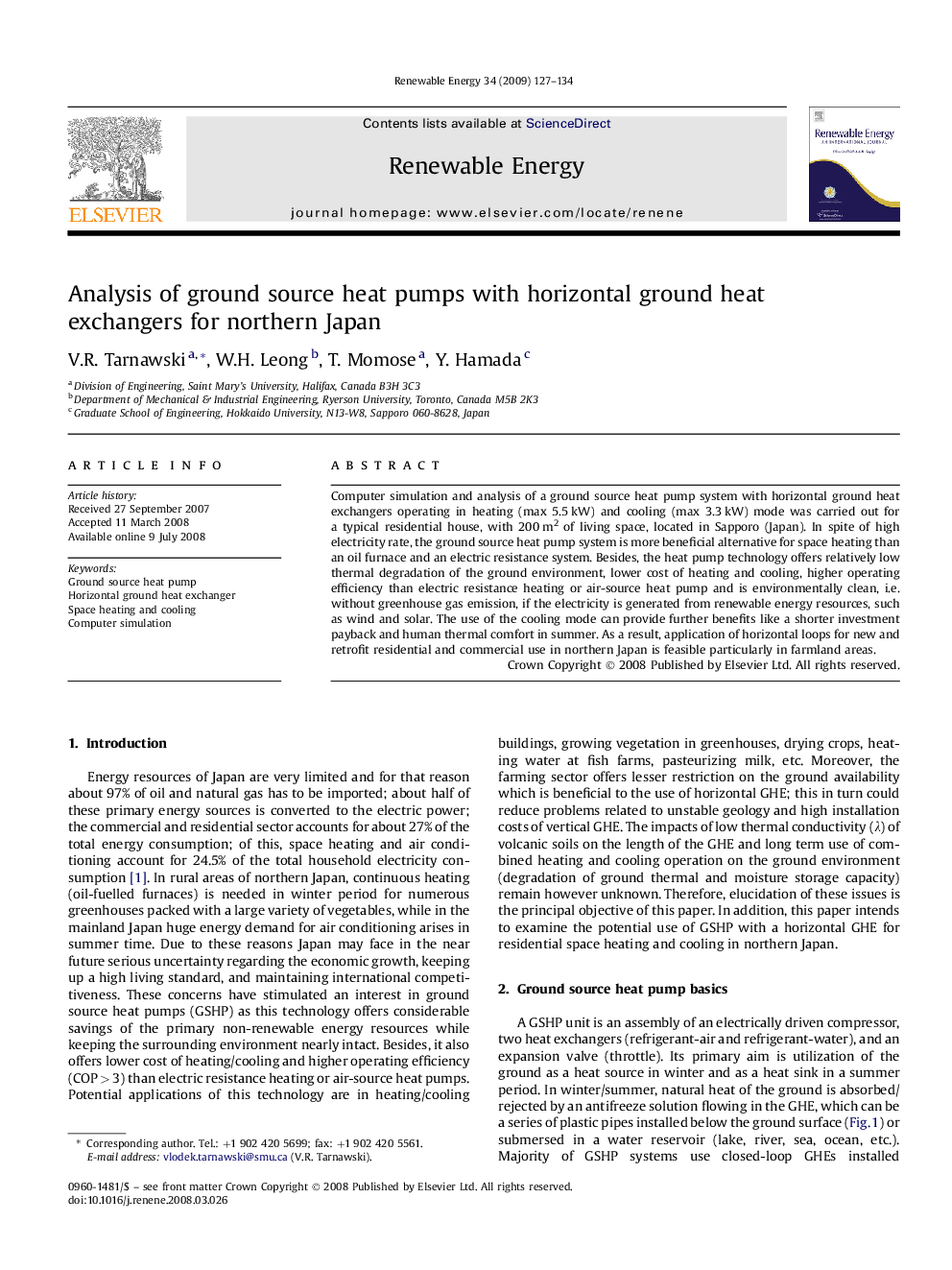| Article ID | Journal | Published Year | Pages | File Type |
|---|---|---|---|---|
| 302577 | Renewable Energy | 2009 | 8 Pages |
Computer simulation and analysis of a ground source heat pump system with horizontal ground heat exchangers operating in heating (max 5.5 kW) and cooling (max 3.3 kW) mode was carried out for a typical residential house, with 200 m2 of living space, located in Sapporo (Japan). In spite of high electricity rate, the ground source heat pump system is more beneficial alternative for space heating than an oil furnace and an electric resistance system. Besides, the heat pump technology offers relatively low thermal degradation of the ground environment, lower cost of heating and cooling, higher operating efficiency than electric resistance heating or air-source heat pump and is environmentally clean, i.e. without greenhouse gas emission, if the electricity is generated from renewable energy resources, such as wind and solar. The use of the cooling mode can provide further benefits like a shorter investment payback and human thermal comfort in summer. As a result, application of horizontal loops for new and retrofit residential and commercial use in northern Japan is feasible particularly in farmland areas.
